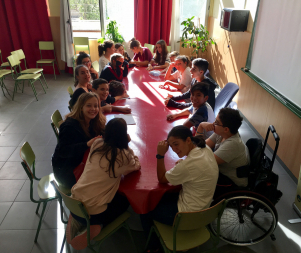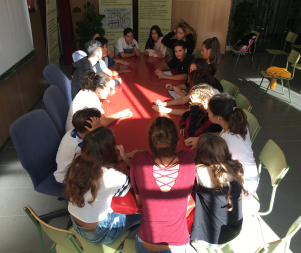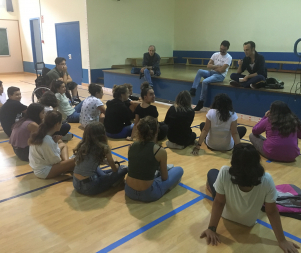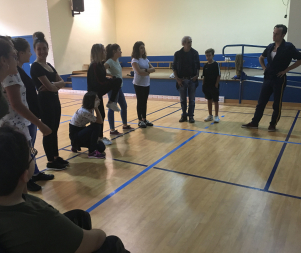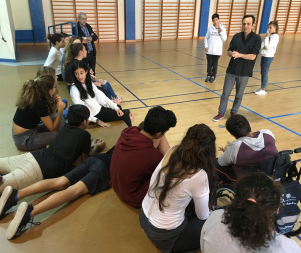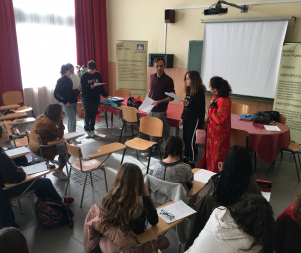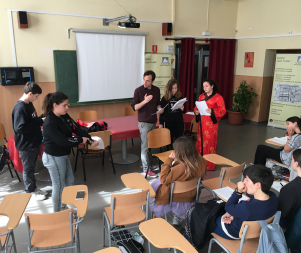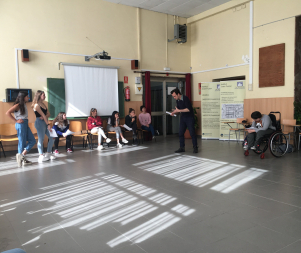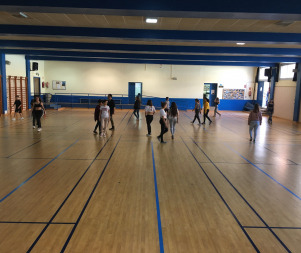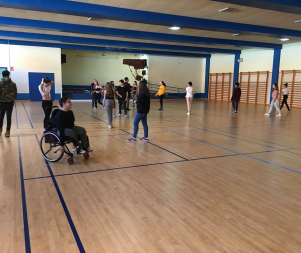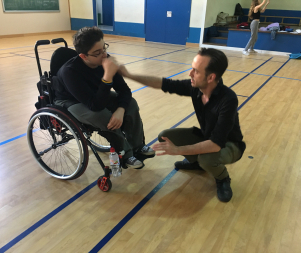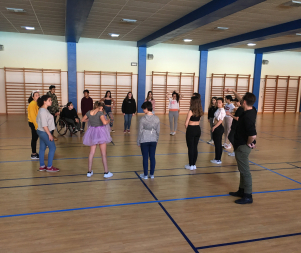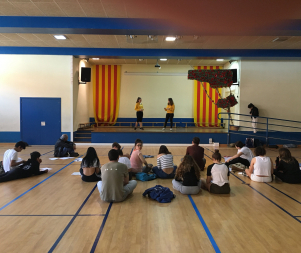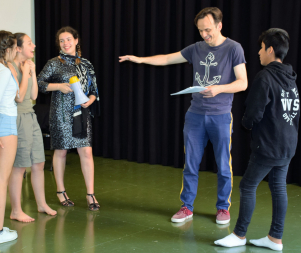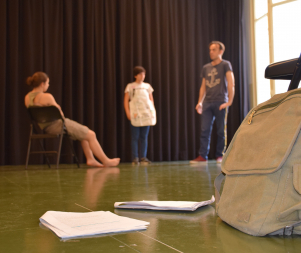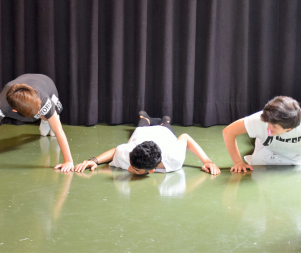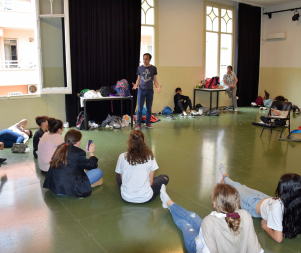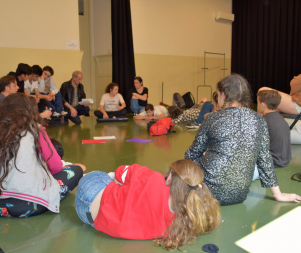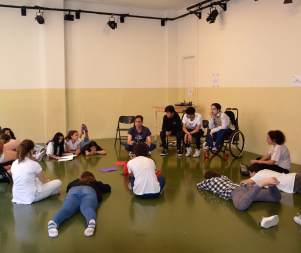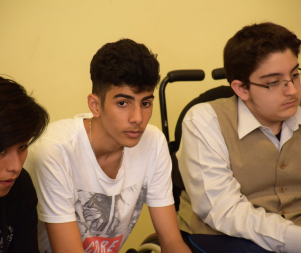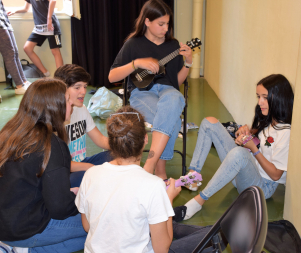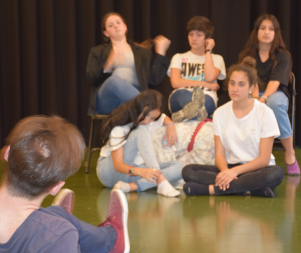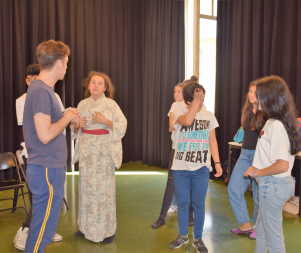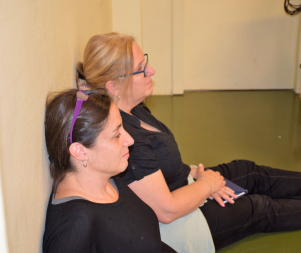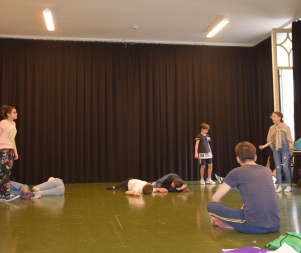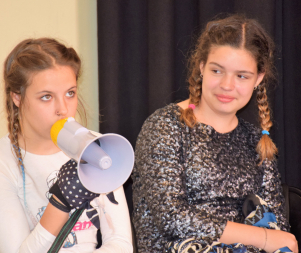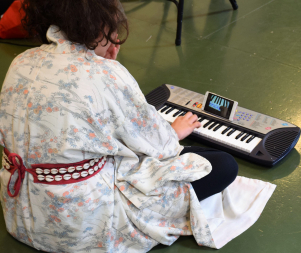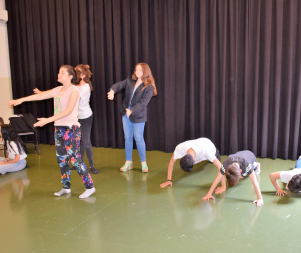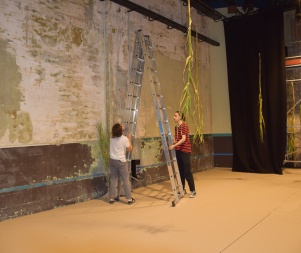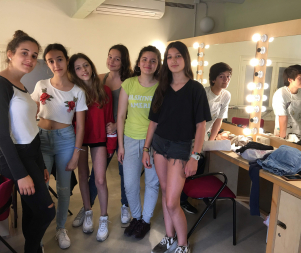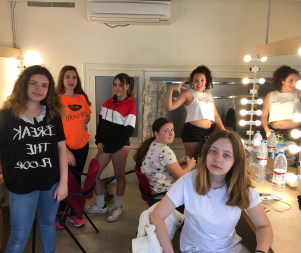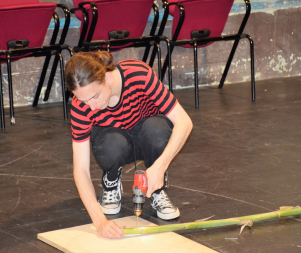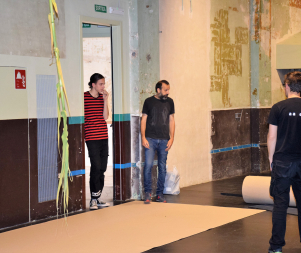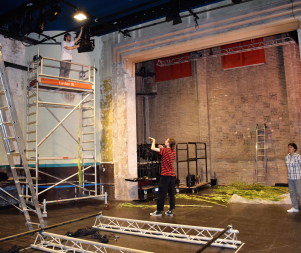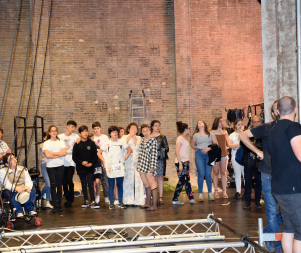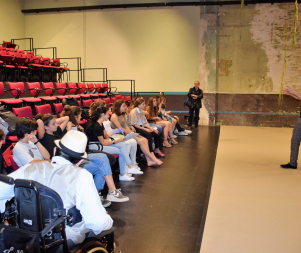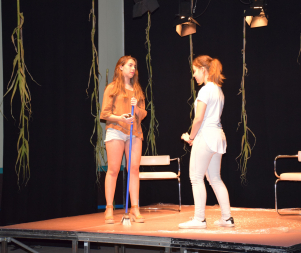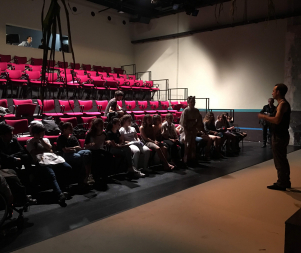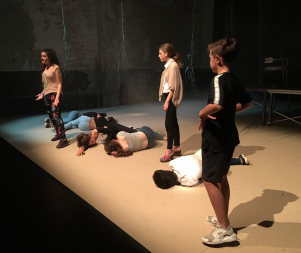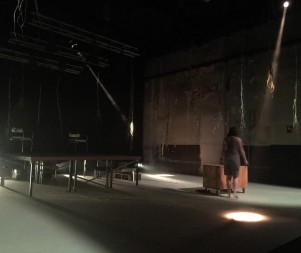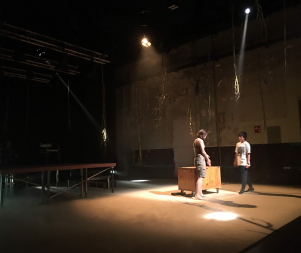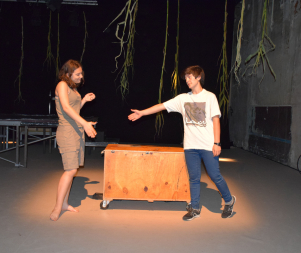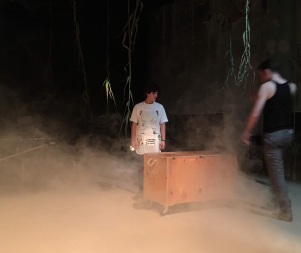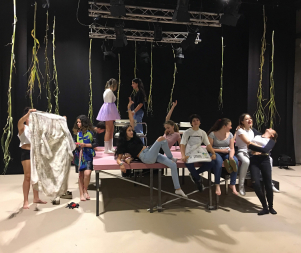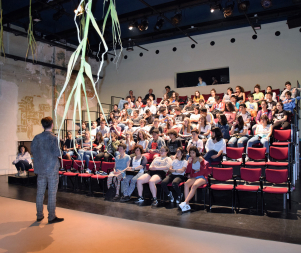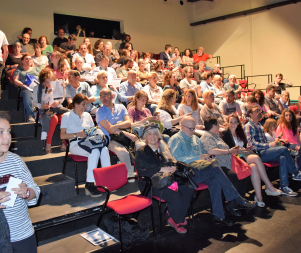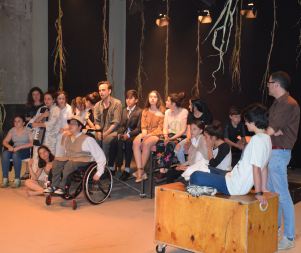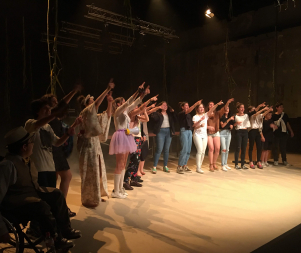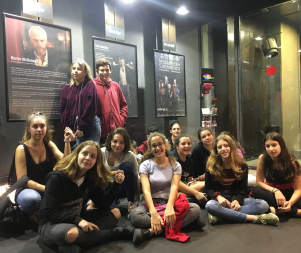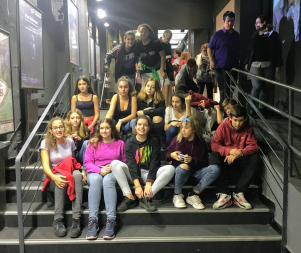- 14th EDITION 2022 / 2023
- 13th EDITION 2021 / 2022
- 12th EDITION 2020 / 2021
- 11th EDITION 2019 / 2020
- 10th EDITION 2018 / 2019
- 9th EDITION 2017 / 2018
- 8th EDITION 2016 / 2017
- 7th EDITION 2015 / 2016
- 6th EDITION 2014 / 2015
- 5th EDITION 2013 / 2014
- 4th EDITION 2012 / 2013
- 3rd EDITION 2011 / 2012
- 2nd EDITION 2010 / 2011
- 1st EDITION 2009 / 2010
Iván Morales IN RESiDENCE at the School Joan Fuster
THE PROJECT
At the start of the project, the theatre director and dramatist Ivan Morales proposed to share the creative process of producing a play with the pupils. The idea was to enable them to take part in his decisions so that they felt that the entire process was their own. He also decided that, throughout the process, these young people would be treated as members of his company, that is, as performers who were going to stage one of his works, which he himself would direct.
The first term, from October to December, was spent getting to know each other and testing things out. Firstly, Ivan Morales introduced himself and his work, talking about what he had done up to then and showing excerpts from some of the plays he had staged and various television series he had taken part in. He invited the pupils to see La calavera de Connemara [A Skull in Connemara] by Martin McDonagh, a play that he had just premiered at La Villarroel as director. During this first stage, he showed the pupils (and got them to try) all the different disciplines involved in creating a play: from writing the text to the performance, as well as set construction, costume design and so on. In short, the aim was to enable everyone to become aware of the disciplines that converge in theatre production.
After the Christmas holiday, it was time to begin defining the project. Ivan had reached a decision: he wanted to make a version of Shakespeare’s The Tempest for and with young people. He believed that, through this play, apparently so far from the lives of these teenagers, he could talk about them, about their fears, concerns and hopes. And also, to have lots of fun!
In the first term, Ivan had set the class several exercises in performing, and two of these would be particularly important to the work that they were now going to do. Firstly, he had asked each pupil to create three different characters to present to the class, going from one to the next quickly and dynamically. Secondly, he had asked them to choose an emotion and to learn to change its intensity, from one to ten, quickly. Ivan chose one character from the three invented by each pupil and cast them in his version of The Tempest, which he entitled L’illa de la felicitate [The Island of Happiness].
The process used to create the written text was developed over the second term. Ivan told the group the story of The Tempest and had them read a few scenes in class. Then, as mentioned, he chose one of the characters that each had created in the first term and got them to refine them more: where they came from, what traits identified them, how they moved, how they spoke, etc. He took these characters and placed them in his version of The Tempest, a summarised version of the play that narrated the basic action that took place. The starting point of the plot might be as follows:
Having been cheated and unfairly kicked out of a reality show competition on a desert island, Manuela decides to stay there to live with her sister and her entourage, to escape from the superficiality and injustice of the outside world. But the balance on her island of personal happiness is endangered when, due to a shipwreck, Àxel, the cause of her misfortunes and winner of the competition, accompanied by his team, are forced to take shelter there.
Ivan divided the story into seventeen scenes and asked the pupils taking part in each to write them. The idea was for each to write what they thought their character would say in the situation. After the pupils had read this material out loud, improvising on it and then rewriting it, Ivan collected the material and adapted and edited it, unifying criteria, linking scenes, etc. That is to say, making that material his own.
During the final two months (basically, the period after the Easter holidays), once Ivan had the play more or less written, he began to put it together with the pupils. Little by little, the performers became more aware of the difficulties involved: learning the text, acting naturally, projecting their voices, etc. Two or three new scenes were rehearsed at each session, and were added to the work they had already done, while the third hour was devoted to reviewing previously rehearsed scenes, revising the text, practicing things that had not gone so well and adding small changes to the text. Little by little, the play was taking shape.
PRESENTATION AT THE SALA BECKETT / OBRADOR INTERNACIONAL DE DRAMATÚRGIA
Practically all the rehearsals took place in the gym at Joan Fuster school, a large space where, despite the freedom it gave, it was difficult to concentrate due to the constant coming and going of other pupils and the acoustic problems.
However, the presentation of IN RESIDENCE, took place in the Sala de Dalt room at the Sala Beckett / Obrador Internacional de Dramatúrgia theatre on May 23. All the pupils taking part in the project went to the theatre the day before to do technical work and familiarise themselves with the space. On the date of the premiere, they spent the whole day at the theatre, rehearsing and solving any last-minute hitches. They gave their first performance at 12 noon for fellow pupils at the school, and a second at 7 pm for the education community in general – families, friends and teachers.
ACTIONS LINKED TO THE RESIDENCY
Over the course of the residency, various activities were organised involving different theatres and institutions:
- 27 September 2017: guided tour of the Sala Beckett theatre to discover the different spaces and elements involved in the creative process behind a performing arts show.
- 2 November 2017: attendance at an evening performance of the play La calavera de Connemara, by the Irish playwright Martin McDonagh, directed by Ivan Morales at La Villarroel theatre.
- The set and lighting for L’illa de la felicitat were designed by Lluc Lóbez and Daniel Flamarique, students at the ESCAC film and audiovisual school.

